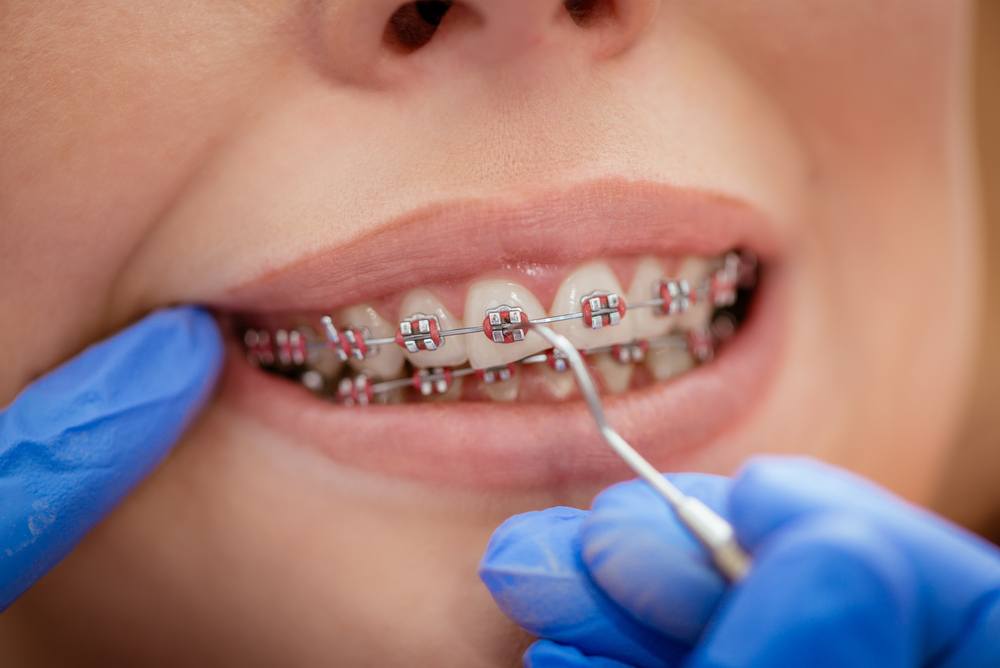Finding the Right Cumming Orthodontist for Your Braces and Aligners Needs
Finding the Right Cumming Orthodontist for Your Braces and Aligners Needs
Blog Article
Comprehensive Overview to Orthodontics Treatments for Remedying Dental Misalignments
In the realm of orthodontics, the trip to attaining a completely lined up smile involves a myriad of treatments customized to remedy dental misalignments. From typical dental braces to undetectable aligners and also surgical options, the area of orthodontics uses a variety of solutions to resolve differing levels of oral irregularities. Understanding the intricacies of each treatment, including their systems, advantages, and prospective drawbacks, is critical in making informed decisions about one's orthodontic therapy. As we navigate via the thorough overview to orthodontic procedures for dealing with dental imbalances, the elaborate information of each approach will certainly unravel, clarifying the course toward a unified and useful dental placement.
Orthodontic Procedures Introduction

Along with clear aligners and typical braces, orthodontists may also recommend other interventions like headwear, palatal expanders, or retainers to deal with certain alignment problems (braces). These treatments are tailored to each patient's special requirements and may involve a combination of therapies to attain the wanted outcomes. Normal changes and tracking are vital components of orthodontic treatment to guarantee progression gets on track and to make any needed modifications along the road. By undergoing orthodontic procedures, people can not just accomplish a straighter grin yet likewise improve their general oral wellness and feature.
Standard Braces: Just How They Work
When considering orthodontic treatments for oral imbalances, traditional braces stand apart as a reliable approach for correcting teeth positioning. Standard dental braces contain braces, cords, and bands that interact to use continual stress on the teeth, progressively relocating them into the desired alignment. The brackets are connected to the teeth utilizing a special adhesive, and the wires are threaded with the brackets. By changing the tension of the cables, orthodontists can manage the instructions and pressure related to each tooth, assisting them right into proper alignment in time.
As pressure is used to the teeth with the dental braces, the bone surrounding the teeth is reshaped to sustain the new tooth positions. People will require routine adjustments at the orthodontist's workplace to make certain the dental braces proceed to apply the right pressure for reliable teeth motion.
Undetectable Aligners: Advantages And Disadvantages
These clear, tailor-made trays are practically undetectable when put on, making them an appealing option for people seeking an extra aesthetically pleasing orthodontic treatment. Clients can eliminate the aligners prior to consuming or cleaning their teeth, reducing the danger of food obtaining stuck in the device and streamlining the cleansing procedure.

Surgical Orthodontic Options
Surgical treatments in orthodontics present viable choices for dealing with intricate dental imbalances that might not be effectively settled with standard orthodontic treatments. While traditional dental braces and invisible aligners can deal with numerous orthodontic concerns, certain situations require surgical intervention to attain optimal outcomes. Surgical orthodontic options are usually advised for severe malocclusions, substantial jaw discrepancies, and instances where the underlying bone structure needs alteration to achieve appropriate placement.
One common surgical orthodontic procedure is orthognathic surgical treatment, which entails repositioning the jaws to fix useful concerns such as difficulty chewing or speaking. This surgery is typically executed in cooperation with an orthodontist who assists straighten the teeth prior to and after the treatment. Surgical orthodontics may also include procedures to expose influenced teeth, remove excess periodontal cells, wisdom teeth removal or reshape the jawbone to produce a much more unified facial profile.
Before taking into consideration medical orthodontic alternatives, patients undergo a detailed analysis to determine the necessity and potential benefits of such interventions. cumming orthodontist. While surgical procedure might appear overwhelming, it can significantly improve both the function and visual appeals of the smile in situations where conventional orthodontic treatments fail
Retainers and Post-Treatment Treatment

Failure to abide with post-treatment care guidelines can result in relapse, where the teeth slowly move back in the direction of their initial settings. Regular retainer wear, great dental hygiene, and routine dental check-ups are necessary for preserving the outcomes achieved with orthodontic surgery and making sure the long-term stability of the dealt with oral positioning.
Verdict
In verdict, orthodontic treatments offer various options for fixing dental More Bonuses misalignments. Surgical orthodontic options are offered for a lot more extreme imbalances. On the whole, orthodontic treatments can properly enhance oral health and wellness and visual appearance.
As we navigate through the extensive guide to orthodontic procedures for correcting dental misalignments, the intricate details of each approach will certainly unravel, dropping light on the path toward a unified and practical oral positioning. - braces
One of the most common orthodontic therapies is the usage of braces, which consist of steel braces and cables that apply mild stress to slowly shift teeth right into the preferred placement.When taking into consideration orthodontic therapies for dental misalignments, typical dental braces stand out as a tried and true method for dealing with teeth placing. In addition, invisible aligners might not be suitable for complicated orthodontic problems that require even more considerable teeth movement, as they are normally suggested for mild to modest situations. Retainers are custom-made orthodontic tools developed to hold teeth in their corrected settings after the completion of orthodontic therapy.
Report this page